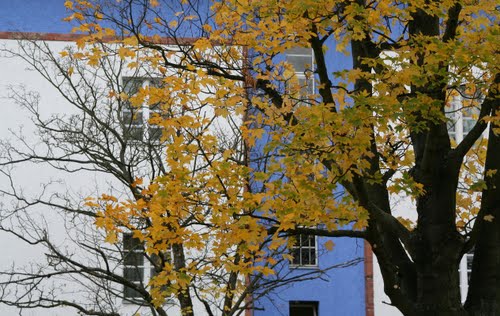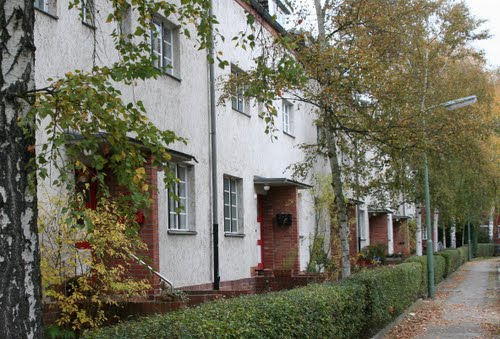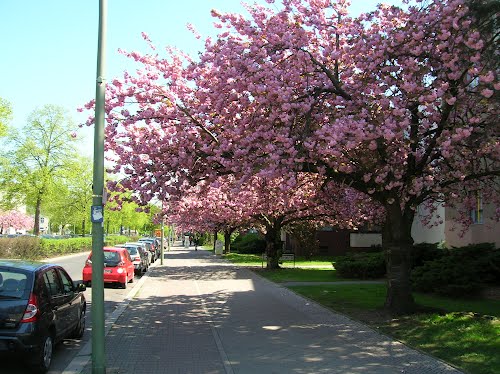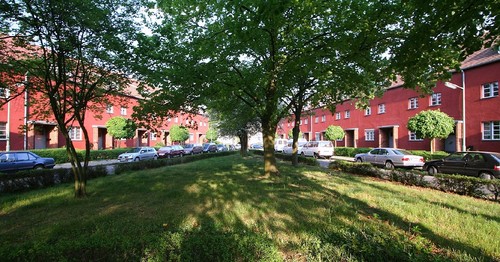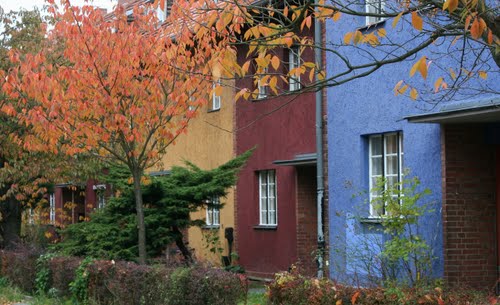The Hufeisensiedlung (Horseshoe Estate) is a housing estate in Berlin, built in 1925-33. It enjoys international renown as a milestone of modern urban housing. It was designed by architect Bruno Taut, municipal planning head and co-architect Martin Wagner, garden architect Leberecht Migge and Neukolln gardens director Ottokar Wagler. In 1986 the ensemble was placed under German heritage protection. On July 7, 2008, it was awarded UNESCO World Heritage status as one out of six Berlin Modernism Housing Estates. Since 2010, the Horseshoe Estate has also been listed as a garden monument. The Hufeisensiedlung is probably the most outstanding example of innovative German town planning during the 1920s.
Horseshoe Estate (Hufeisensiedlung), Berlin
-
 1
1Carl Legien Housing Estate (Wohnstadt Carl Legien), Berlin
The Carl Legien Housing Estate was named after the first chairman of the Allgemeiner Deutscher Gewerkschaftsbund [German General Trade Unions Association] founded in 1919.
-
 3
3Schillerpark Settlement (Siedlung Schillerpark), Berlin
The Schillerpark Settlement was the first metropolitan housing project in Berlin during the Weimar Republic. Taut's urban planning reflects modern Dutch architecture, particularly the work of Jakobus Johannes Pieter Oud. His choice of materials also reflects the brick buildings of Amsterdam.
-
 1
1Siemensstadt Housing Estate (Großsiedlung Siemensstadt), Berlin
The Siemensstadt Housing Estate is a nonprofit residential community in the Charlottenburg-Wilmersdorf district of Berlin. It is one of the six Modernist Housing Estates in Berlin recognized in July 2008 by UNESCO as a World Heritage Site.
-
 10
10White City, Berlin
The White City in Berlin, also known as Swiss Quarter, in reference to the street names in the vicinity of the complex, was commissioned by the head of city planning at the time, Martin Wagner. Wagner was also responsible for other social housing projects in Berlin.





